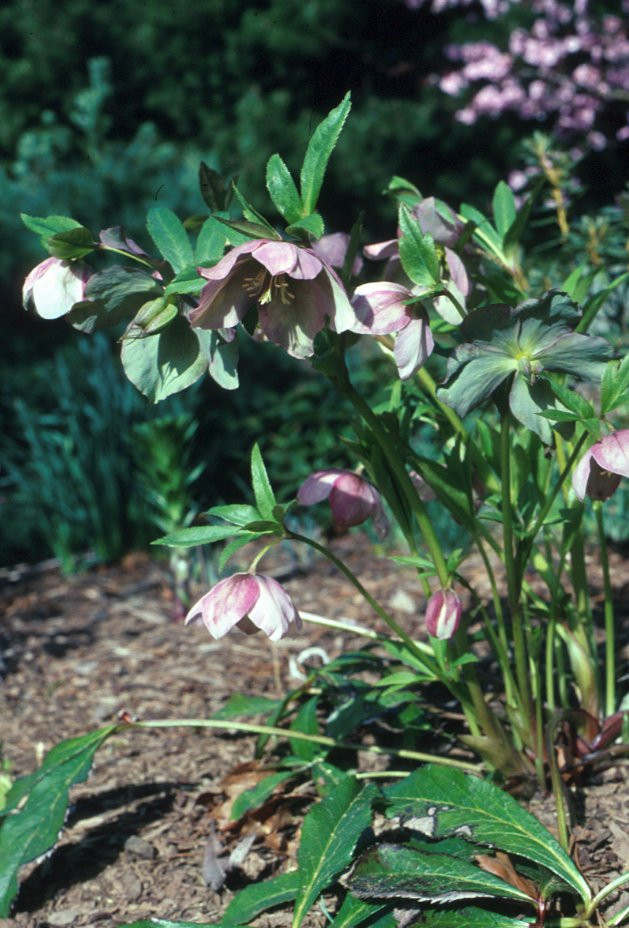| Botanical Name: Helleborus orientalis | |
| Common Name: Lenten Rose |

-
Anatomy
-
Culture
-
Design
Plant Type
Ground cover, Perennial
Height Range
1-3'
Flower Color
Pink, White
Flower Season
Winter, Spring
Leaf Color
Dark Green
Bark Color
n/a
Fruit Color
n/a
Fruit Season
n/a
Sun
Half, Shade
Water
Medium
Growth Rate
Slow
Soil Type
Sandy, Clay, Loam
Soil Condition
Average, Rich, Well-drained, Moist
Soil pH
Neutral
Adverse Factors
Poisonous
Design Styles
English Cottage, Formal, Japanese, Woodland
Accenting Features
Showy Flowers
Seasonal Interest
Spring
Location Uses
Entry, Perennial Border, Foundation, Patio
Special Uses
Cut Flowers, Small Spaces
Attracts Wildlife
n/a
Information by: Stephanie Duer
Photographer: Linda Engstrom
Photographer: Linda Engstrom
-
Description
-
Notes
Lenten rose is a clump-forming, late winter-blooming perennial which typically grows 12 to 18 inches tall with an equal spread. It features large, cup-shaped, rose-like, (usually) nodding flowers with center crowns of conspicuously contrasting yellow stamens. Flowers usually appear in late winter to early spring, in clusters on thick stems rising above the foliage. Flower color is extremely variable, ranging from white to pink to light rose-purple, frequently with interior spotting. Glossy green leaves are palmate, serrate, and sometimes evergreen (though usually we are cold enough that it is deciduous). Leaves, stems and roots are poisonous. Use as an understory plant, sheltered by high canopied shrubs or trees. Useful in dry shade locations. There is a lovely little planting at the Gilgal Garden, and is a wonderful reason to visit the garden in early April.
Best grown in organically rich, loamy, well-drained soils in part to full shade, though with good soil they will grow in part sun, as long as they receive protection from mid-day sun during the summer months. Locate plants in areas protected from cold winter winds. Under the right conditions, clumps establish fairly quickly. New plants can be obtained from division of the clumps (best in spring) and from seedlings which grow up around the plants as a result of self seeding, though it does not aggressively reseed in our climate. Visit hellebores.org for more information.